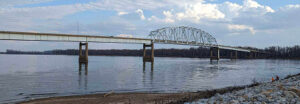This program provides low-cost financing for stormwater management, green infrastructure, treatment works, and water conservation projects that address flooding and other concerns.
|
Supports nature-based solutions |
Targeted support for small communities |
||
|---|---|---|---|
|
Encourages public-private partnerships |
Application cycle: January 23, 2025 – May 30, 2025 to receive funding in FY2025. Applications submitted between May 30, 2025 – September 30, 2025 may not be awarded until the following fiscal year.
Summary: Communities concerned with habitat conservation and its benefits related to flood mitigation might consider the U.S. Fish and Wildlife Service (FWS) Coastal Program. The Coastal Program provides technical and financial assistance through cooperative agreements with coastal communities, conservation partners, and landowners to restore and protect fish and wildlife habitats on public and private lands.
Eligible applicants: City, township, special district, county, or state governments; nonprofit and for-profit organizations; small businesses; independent school districts; public and state controlled institutions of higher education; private institutions of higher education; public housing and Indian housing authorities; Native American tribal organizations; Native American tribal governments; individuals.
Funding amount: Up to $500,000 for individual awards.
Cost share: Cost sharing is encouraged but not required, although FWS strives to achieve a cost-share ratio of 50% federal / 50% nonfederal.
Eligible activities: Technical and financial assistance for habitat conservation planning; design and project implementation activities to deliver habitat conservation in coastal watersheds on both public and private lands; and technical and financial assistance for third-party land acquisitions to protect habitats. To support the Department of the Interior’s financial assistance priorities, some Coastal Program projects include culvert retrofits; stream channel improvements; the removal of tidal restrictions and low-head dams and levees; wetland restoration; living shorelines; streambank stabilizations; dune restoration; revegetation; fencing; the construction of berms; and the installation of water control structures.
- Filter — Public Private Partnerships: This program emphasizes collaborative efforts between private landowners, conservation organizations, local governments and other stakeholders.
- Filter — Watershed/regional focus: Program guiding principles includes emphasizing the importance of understanding ecological resources in entire watersheds or geographic focus areas. Program managers are required to participate in technical committees and workgroups such as regional conservation groups or watershed organizations.
Application process:


